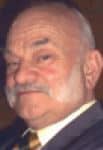Lance Corporal Dominic Hall was born in Penzance, Cornwall on the 27th of September 1931 and enlisted in The Royal Armoured Corps on the 28th of March 49. After training as a tank gunner he was posted to the 8th Hussars.

Following the North Korean invasion of South Korea in 1950 and the establishment of a United Nations Force to drive out the North Koreans, the UK Government decided to send the 29th British Independent Infantry Brigade Group to join the UN Forces in Korea.
The 8th Hussars were allocated to 29 Brigade as an Armoured Regiment equipped with Centurion Mk 3 Main Battle Tanks. This was the first time Centurions had been used in action.
The 8th Hussars sailed for Korea on the HMT ‘Empire Fowey’ arriving at Pusan on the 14th of November 1950. Dominic was a member of ‘B’ Squadron and after the appalling winter weather, ‘B’ Squadron in the Spring of 1951 was located south of the River Imjin in an area called Mistletoe Orchard under the command of Major WGO Butler. Dominic was in 3 Troop whose Troop Leader was Lt. (Later Colonel) Chris Troughton. Dominic was a member of the crew of Cpl. Williams’ Centurion (3 Charlie).
During this period ‘B’ Squadron undertook many patrols over the River Imjin into Chinese-held territory to dominate No Mans Land, culminating in the ‘Lowther Force’ operation where the Centurions and Infantry made a long-distance incursion into the Chinese-held territory.
‘B’ Squadron then moved South which was immediately followed by the Chinese offensive of the Battle of the Imjin in April 1951 where ‘C’ Squadron was involved in a major action and responsible for successful coverage of the withdrawal of many of the 29 Brigade Infantry.
After the Battle of the Imjin ‘B’ Squadron returned to Mistletoe Orchard and carried out many sorties across the River Imjin as the Chinese were unable to hold the land they occupied in the short term following the Battle of the Imjin. Dominic was involved in all these operations. Later in the Summer of 1951, the 1st Commonwealth Division was formed, consisting of the 25th Canadian, 28th Commonwealth and 29th British Brigades.
In October 1951 the 1st Commonwealth Division undertook Operation Commando to straighten the UN front line and involved a move forward of about six miles. ‘B’ Squadron supported the 3rd Battalion Royal Australian Regiment (3RAR) in their capture of three of the major hills. (Hills 238, 199 and 317.)
In November 1951 it was decided the 1st Battalion the Leicestershire Regiment would attack and occupy the Chinese-held Hill 217 and two Centurions of 3 Troop ‘B’ Squadron commanded by Lt. Troughton and Cpl. Williams would move forward on the ground with 1 Leicesters directly shooting them onto Hill 217. 1 Leicesters bravely advanced through an incredible amount of Chinese artillery and mortar fire and actually got on to Hill 217, but became utterly overwhelmed by the enormous number of artillery shells/ mortar bombs and were ordered to withdraw as they suffering such serious numbers of casualties.
3 Troop actively covered the advance and withdrawal and were finally moving back when they met a 1 Leicesters Platoon carrying their wounded back to their Regimental Aid Post. Lt. Troughton and his crew stopped and lifted some of the wounded onto the engine deck of their Centurion and moved forward.
Cpl. Williams’ Centurion then came in to pick up the remaining wounded. Cpl. Williams, Dominic and the wireless operator dismounted and were lifting the remaining wounded onto their engine deck when a Chinese mortar bomb exploded amongst them, severely wounding Cpl Williams and Dominic who then also had to be lifted onto the engine deck.
Lt. Troughton rushed back from his Centurion and oversaw the wounded being placed on the engine deck and took over command of Cpl Williams’ Centurion. Cpl. Williams and Dominic were evacuated to the Regimental Aid Post and finally transferred to the British Military Hospital in Kure, Japan due to the severity of their wounds.
Cpl. Williams and Dominic were medically downgraded and were never fit enough to rejoin a tank crew so were occupied with other activities. Dominic’s wounds affected him for the rest of his life. He left the Army on the 27th of March 1954.
Taking his medical condition into consideration Dominic was allowed to join the Territorial Army serving in the Royal Signals from 1957 until 1963 and Army Catering Corps from 1964 until 1974.
In civilian life, he trained and qualified as an NHS Operating Theatre Technician working in Frenchay Hospital, Bristol and later on at the Royal Cornwall Hospital. He was prematurely retired from the National Health Service mainly as a result of his war wounds but then worked for Courage the Brewers.
In 1955 he married Elizabeth Reynolds and their children are Gillian, Michael, David, Douglas and Teresa. Sadly Elizabeth died in 1994. His health in the latter years has not been good, mainly due to his wounds received in Korea. He died on 27 October 2009.


